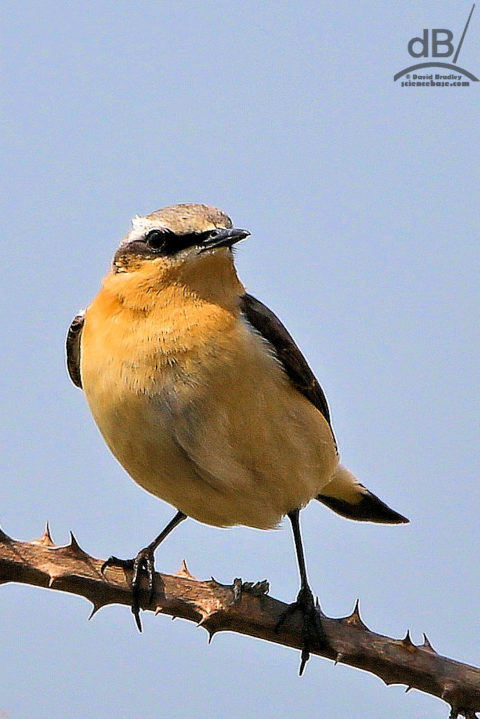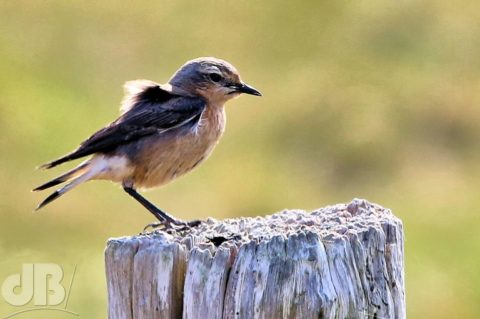UPDATE: Just reading in “Wonderland” by Stephen Moss (the bird bits, I assume) and Brett Westwood (the other bits) about how in 1766, naturalist Thomas Pennant noted that 20000 Wheatear were caught on Eastbourne downs and sold in town by the dozen for sixpence as a tasty snack.
Shocking to the modern ear as that sounds in terms of this delicate little bird being a foodstuff it’s not really any worse than eating any other animal. But, it’s the numbers they caught that seem staggering. This was the pre-industrialisation era when flora and fauna boasted far greater numbers than we ever see today in the age of plastic and pollution. The RSPB website says there are about 240,000 breeding pairs in the British Isles each summer.

The Wheatear (Oenanthe oenanthe) is a small, old-world flycatcher. It’s scientific binomial is a tautonym, both words are the same meaning it is the archetype of its class. The word itself comes from the Greek for wine, oenos and anthos meaning flower and is linked to the bird’s return to Greece in the spring when the grapevine is in blossom.

Its English name, Wheatear, conjures up farmland perhaps, crops swaying in the breeze as the bird hops about foraging for insects and grubs. But, it’s nothing of the sort, it comes from the late 16th Century and refers to the colouration of the bird’s rump, it was known as a “white-ears”, which eventually morphed into wheatear. But, it’s not its “ears” that are white, rather it has an obviously white rump seen in flight. “ears” (aers) meaning hindquarters, or buttocks, dating back hundreds of years, thence “arse” in modern English (etymology here). In French the bird is a “cul blanc”, same thing, white rump.